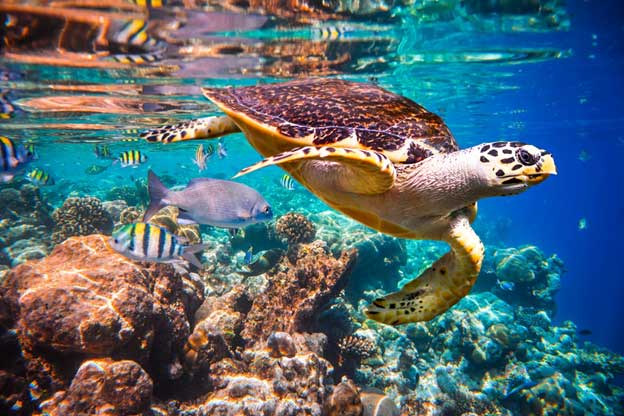Protecting Nature is Entirely Within Humanity’s Reach: The Work Must Start Now

NAIROBI, Kenya, Sep 15 (IPS) - We have known for a long time that biodiversity, and the services it provides, have been in decline. It is on this background that ten years ago, the international community adopted the Strategic Plan for Biodiversity 2011-2020.
The goal of the plan, and its Aichi Biodiversity Targets, was to halt biodiversity loss and ensure that ecosystems continued to provide essential services.
Governments and the wider society have acted to address the biodiversity crisis. Some nations have made some progress. However, as this Report Card on global progress demonstrates, we have not met the Aichi Biodiversity Targets. And we are not on track for the 2050 Vision for Biodiversity.
Many of you might have heard me speak to the devastating consequences of humanity's imprint on nature, in particular, the COVID-19 pandemic, a zoonotic disease transmitted between animals and humans, which is by no means the first and will not be the last.
From COVID-19 to massive wildfires, floods, melting glaciers and unprecedented heat, our failure to meet the Aichi Targets – to protect our home – has very real consequences. We can no longer afford to cast nature to the side. Now is the time for a massive step up, conserving, restoring and using biodiversity fairly and sustainably.
If we do not, biodiversity will continue to buckle under the weight of land- and sea-use change, overexploitation, climate change, pollution and invasive alien species. This will further damage human health, economies and societies, with particularly dire impacts on indigenous communities.
This Global Biodiversity Outlook spells out transitions that can create a society living in harmony with nature: transitions in how we use land and forests; organize our agriculture and food supply systems; manage fisheries; use water; manage urban environments and tackle climate change. There are many examples that show how the right policies can bring positive outcomes.
For example, where fisheries have been regulated and reported, abundance of stocks has improved. Where coordinated action has been taken to slow deforestation, habitat loss has been controlled. Ecosystem restoration, when implemented effectively and with the support of local populations, has reversed decades of degradation.
To knit the global response together, UN Member States will soon adopt the Post-2020 Global Biodiversity Framework. In the Framework, we need ambitious, clear and common targets for a nature-positive world.
Targets that can be broken down and implemented at the national level. We need targets that can be added up, so we know whether we are on track to meet the new goals that we will set. We need financing, capacity development, transparency and accountability.
We need buy-in from the sectors and groups – infrastructure, agriculture, government, business and finance – that drive biodiversity loss. This may seem like a tall order, but I believe protecting nature is entirely within humanity's reach. There is today a far deeper understanding of what nature loss means for health and well-being.
Businesses can no longer afford to ignore the risk of biodiversity loss to profitability. And we are seeing countries, companies and financiers begin to lean in on the nature agenda. As we seek to stretch on the Nationally Determined Contributions (NDCs), we have a real shot at embedding ecosystem-based adaptation and nature-based solutions into climate action.
We don't need to wait for the Biodiversity Framework to be finalized before we begin this work. As the UN Secretary-General has noted, this is a "make or break moment for the planet".
As we seek to reboot the global economy following COVID-19, how we prioritize and direct our resources will either secure human, economic and environmental health for generations to come, or take us down the grey path that has brought with it the suffering we are seeing today.
We have little choice in the path we must take.
© Inter Press Service (2020) — All Rights Reserved. Original source: Inter Press Service
 Global Issues
Global Issues